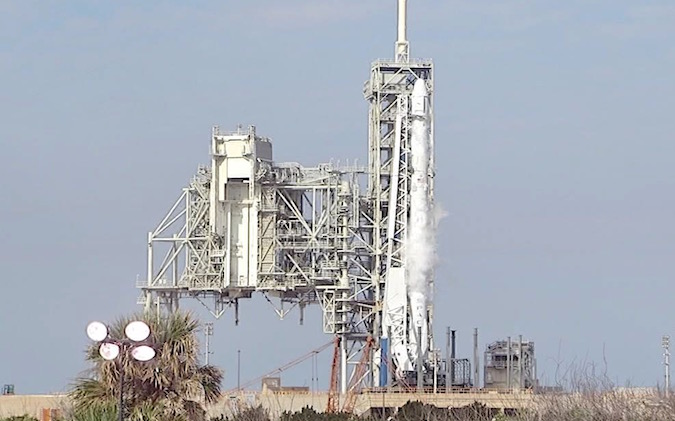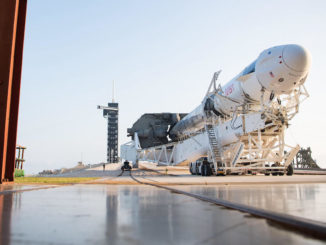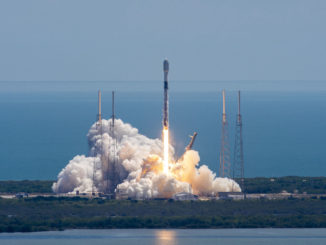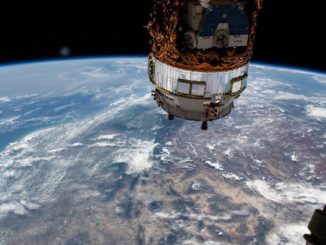
SpaceX called off the planned launch of a Falcon 9 rocket Saturday less than 15 seconds before liftoff to investigate the “slightly odd” behavior of the vehicle’s upper stage engine steering system, company chief Elon Musk said.
Engineers were examining the unexpected readings from the upper stage steering system throughout the countdown Saturday morning as the Falcon 9 rocket targeted blastoff from launch pad 39A at NASA’s Kennedy Space Center at 10:01 a.m. EST (1501 GMT).
As the countdown ticked the final seconds before liftoff, a member of the launch team called a hold.
“T-minus 20… Hold. Hold. Hold,” the operator said. “Clock has stopped.”
The countdown clock halted at T-minus 13 seconds, and the pause automatically led to the launch being scrubbed for the day. The rocket only had a one-second opportunity to take off Saturday and deliver supplies to the International Space Station.
SpaceX officials said the mission will be pushed back to at least Sunday, when a backup opportunity is available at 9:38:59 a.m. EST (1438:59 GMT), assuming the technical problem can be addressed and corrected, if necessary.
Elon Musk, SpaceX’s founder and CEO, tweeted that the movement of a hydraulic steering piston on the upper stage’s Merlin vacuum engine was “slightly odd.”
“Standing down to investigate,” Musk wrote.
All systems go, except the movement trace of an upper stage engine steering hydraulic piston was slightly odd. Standing down to investigate.
— Elon Musk (@elonmusk) February 18, 2017
He later wrote that there is a 99 percent the flight would be fine, even without fully understanding the problem. “But that 1% chance isn’t worth rolling the dice,” Musk tweeted. “Better to wait a day.”
“System was green for launch,” he tweeted. “I called it off.”
Musk said SpaceX engineers “need to make sure that it isn’t symptomatic of a more significant upstream root cause.”
The hydraulic thrust vector control actuator pivots the nozzle of the second stage’s Merlin engine, directing approximately 200,000 pounds of thrust in the desired direction to steer the rocket in flight. The steering system is driven by a high-pressure bleed from the upper stage’s kerosene fuel system, eliminating the need for a pump or dedicated hydraulic fluid, Musk said.
He added that there was no obvious connection between the steering system’s misbehavior and a “very tiny” helium leak in the second stage engine’s spin start system, a redundant ignition source used to restart the powerplant in space.
SpaceX studied the helium leak Friday, and elected to go ahead with the countdown. The spin start system is not required to complete the mission’s primary purpose of placing the Dragon supply ship in orbit to begin its journey to the space station, but the rocket would need it to reignite the engine for a second stage de-orbit and disposal maneuver, company officials said.
The Dragon spacecraft on top of the Falcon 9 rocket is packed with nearly 5,500 pounds (2.5 metric tons) of supplies and experiments going to the space station.
This is the 10th such resupply launch conducted by SpaceX since 2012. It also happens to be SpaceX’s first launch off pad 39A at the Kennedy Space Center, a storied launch facility originally built for the Apollo moon program and modified for the space shuttle.
Pad 39A was the site of 12 Saturn 5 launches, including all the moon landing missions and the Skylab space station, then hosted 82 space shuttle takeoffs spanning the 30-year program.
SpaceX signed a 20-year lease to take over the launch complex from NASA in April 2014, and with the company’s previous launch site at Cape Canaveral damaged in the wake of a rocket explosion last year, pad 39A will support all Falcon 9 flights through at least mid-2017, plus the debut of the powerful Falcon Heavy booster this summer.
Email the author.
Follow Stephen Clark on Twitter: @StephenClark1.



